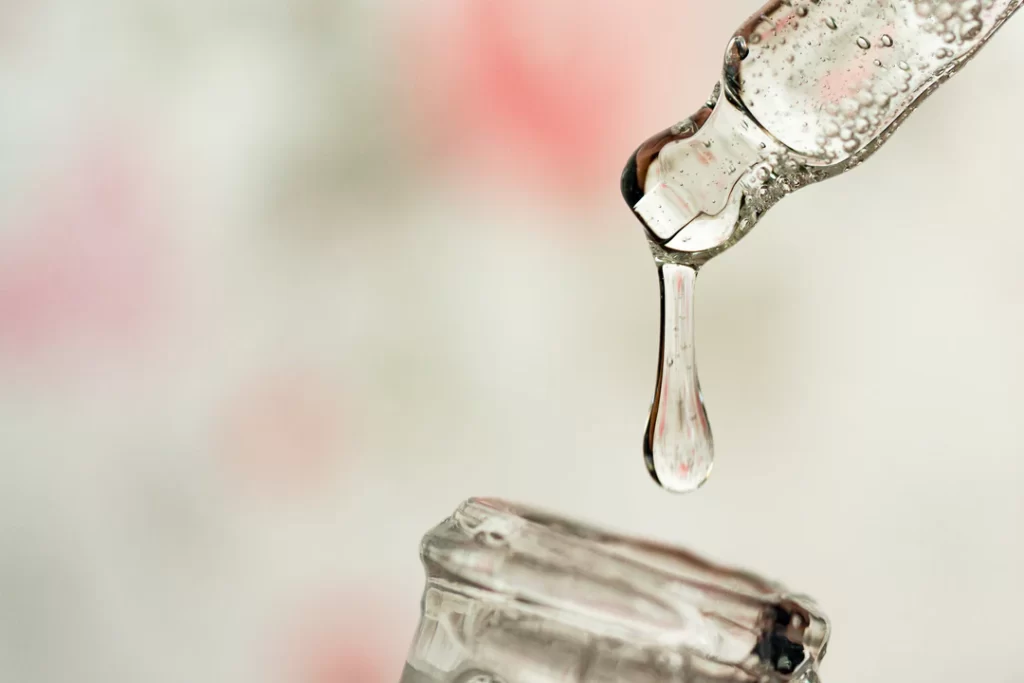
How to Layer Hyaluronic Acid and Lactic Acid
“How can I use more than one acid?” this is a question that occurs quite frequently in our inbox. Knowing how to layer skincare ingredients can be tricky in the best of times, but when you consider using acids together- well that just makes matters slightly more complicated. Using the wrong acids together will result in the skin becoming irritated and will prevent both products from delivering the best results- having said that, finding a winning working duo will give you the best skin possible.
Today let’s focus on two acids that are well-known and well used, hyaluronic acid and lactic acid. What they do for the skin and how you can layer them when using them both in your skincare routine.
Is hyaluronic acid and lactic acid the same?
No they aren’t the same, however lactic acid is one of the gentlest AHAs that can not only exfoliate the skin but can also act as a humectant. Hyaluronic acid is praised for its humectant abilities and helps lock moisture into the skin keeping the surface layers and protective barrier fully hydrated, strengthened, and able to combat any damage caused from exposure to free radicals, such as pollution, UV light, central heating, and other environmental aggressors.
The main difference between the two acids is the fact that hyaluronic acid doesn’t perform exfoliating properties unlike lactic acid. Lactic acid is able to slough away the build-up of dead skin cells, which can result in breakouts, flaky patches of skin and lack lustre complexion. Hyaluronic acid works instead at hydrating the outer and lower layers of the skin ensuring they are plumped, moisturised with a visibly improved finish to the complexion.
Can you use hyaluronic acid and lactic acid together?
Both these products may carry the name “acid” but do in fact act completely different on the skin and here’s how.
Lactic Acid
As a member of the Alpha Hydroxy Acid (AHA) lactic acid provides chemical exfoliation meaning it can slough away a build-up of dead skin cells and rid the skin of any impurities and bacteria. The beauty of lactic acid is the fact it is derived from fruit sugars and soured milk and has gained the reputation as being one of the most gentle AHAs due to the fact its molecular size is very large preventing it from penetrating too far down in the lower layers leading to skin reactions and irritation. You’ll also find that lactic acid also has the unique trait of acting as a humectant meaning it is able to lock in moisture into the skin keeping it healthy and plumped with a youthful bounce.
Hyaluronic Acid
This skin hero is loved by all, its ability to bind water double the size of its weight enables it to be the most hydrating ingredients formulated into various effective, and moisturising products. This potent humectant can draw in moisture surrounding the skin and ensure the surface barrier, and even the lower layers of the skin remain hydrated throughout the day. This will not only keep the skin healthy but will also prevent any potential skin irritation from occurring.
Now that you have a better understanding of the differences between these acids it’s easier to figure out how they can work together. Thanks to the hydration from hyaluronic acid any sign of irritation (however rare) from lactic acid will not be anything to worry about.
When using these ingredients together there is the formulations to take into consideration as this will determine how you can use lactic acid and hyaluronic acid together. For example, I find the most effective formulas containing lactic acid come in exfoliating toners and face cleansers. Follow these with a serum packed with hyaluronic acid you are preparing your skin to reach its healthiest state and look its best. If this sounds confusing, the next section is for you as I will now go into a little more detail about which order to use lactic acid.
What order do you use lactic acid in?
As I have already mentioned, when layering skincare ingredients, you need to take into consideration the formula consistency. The general skin rule is applying skincare products from thinnest to thickest. You usually find that hyaluronic acid is formulated into products that remain on the skin for most of the day. This is because the humectant properties in HA work tirelessly whenever it is applied to the skin and continue to work.
You will also find that lactic acid comes in various products, from cleansers, toners, and serums. By applying lactic acid before hyaluronic acid, you are allowing the skin to reap the rewards of gentle exfoliation before restoring moisture back once you apply a serum enriched in HA. If, however, you opt for a lactic acid serum as well, then allow 10 minutes between applications to ensure each of the formulas potent ingredients will reach the areas they need to be to work at achieving your skin goals.
What should you not mix with hyaluronic acid?
Taking into consideration the vast variety of all the skincare ingredients, believe it or not, hyaluronic acid is able to work well with almost all of them! With its hydrating benefits and ability to keep the skin’s natural protective barrier fully functioning. It is however, important to consider which products and ingredients you plan to use in conjunction with hyaluronic acid to ensure they are suitable for you and your skin.
This can be easily achieved by performing patch tests for 24 hours of any new ingredients or products to avoid any unwanted skin reactions and irritation. If you have any further concerns its best to consult with a doctor or dermatologist.
Can I use hyaluronic acid with niacinamide and lactic acid?
Introducing niacinamide into your routine when you already use hyaluronic acid and lactic acid is not as complicated as it may appear. Although niacinamide provides similar benefits to hyaluronic acid there are some unique traits that help work with the rest of your skincare routine. Both niacinamide and hyaluronic acid work as humectants aiding the skin to remain plumped, the main difference between them is the fact that hyaluronic acid can bind more water to the skin whilst niacinamide regulates the sebum production restoring balance to the skin surface and allowing any products applied after to work more effectively.
Can I apply moisturiser after lactic acid?
Absolutely, this is a great idea especially if you have a dry or sensitive skin type that can become irritated when you use AHA or other chemical exfoliates even ones as gentle as lactic acid. By applying a moisturiser after using a product containing lactic acid, you’ll help calm the skin and form a physical barrier over the outer layers ensuring it will keep the skin protected from any exposure to free radicals. These free radicals, such as pollution, UV rays and central heating cause damage to the skin which results in dark spots, hyperpigmentation and fine lines and wrinkles.
So, there you have a little more information about how to use lactic acid and hyaluronic acid together in your everyday skincare routine. Don’t forget to check out our previous blog posts series as we explain how to use potent skincare ingredients together.
If you have any questions, or just want to say hi then come and join us on Instagram!


